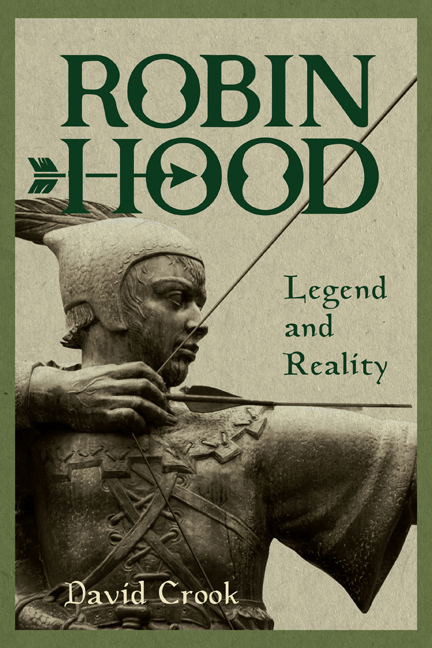Book contents
- Frontmatter
- Dedication
- Contents
- List of Maps and Illustrations
- Preface and Acknowledgements
- List of Abbreviations
- Introduction
- PART I THE LEGEND AND ITS INTERPRETERS
- Chapter 1 The Medieval Tales of Robin Hood
- Chapter 2 Chroniclers, Revellers, Playwrights and Antiquarians, c.1420–1765
- Chapter 3 Editors, the Folklorist and the Archivist, 1765–1889
- Chapter 4 Folklorists, Literary Scholars and Historians: Robin Hood in the Twentieth Century
- Chapter 5 The Robin Hood Places
- PART II OUTLAW AND EVILDOER OF OUR LAND: THE ORIGINAL ROBIN HOOD
- Chapter 6 The Robin Hood Names
- Chapter 7 Robin Hood and Criminality
- Chapter 8 Law and Disorder in Yorkshire, 1215–1225
- Chapter 9 The Sheriff, the Fugitive and the Civil Servant
- Conclusion
- Bibliography
- Index
Chapter 7 - Robin Hood and Criminality
Published online by Cambridge University Press: 16 September 2020
- Frontmatter
- Dedication
- Contents
- List of Maps and Illustrations
- Preface and Acknowledgements
- List of Abbreviations
- Introduction
- PART I THE LEGEND AND ITS INTERPRETERS
- Chapter 1 The Medieval Tales of Robin Hood
- Chapter 2 Chroniclers, Revellers, Playwrights and Antiquarians, c.1420–1765
- Chapter 3 Editors, the Folklorist and the Archivist, 1765–1889
- Chapter 4 Folklorists, Literary Scholars and Historians: Robin Hood in the Twentieth Century
- Chapter 5 The Robin Hood Places
- PART II OUTLAW AND EVILDOER OF OUR LAND: THE ORIGINAL ROBIN HOOD
- Chapter 6 The Robin Hood Names
- Chapter 7 Robin Hood and Criminality
- Chapter 8 Law and Disorder in Yorkshire, 1215–1225
- Chapter 9 The Sheriff, the Fugitive and the Civil Servant
- Conclusion
- Bibliography
- Index
Summary
In contemporary popular imagination the legendary outlaw Robin Hood is often associated with opposition to the forest laws of the Anglo- Norman and then Plantagenet monarchs who ruled England from 1066 onwards, and it is sometimes assumed that his outlawry arose from his offences against those laws. There is, however, a growing consensus among both historians and literary scholars that the original Robin Hood, if one existed, had nothing to do with the forest laws or the greenwood, but was a notorious highway robber whose supposed association with forests and woodland came about only after the genesis of his legend. According to Barrie Dobson and John Taylor,
by a now familiar paradox the genesis of the most famous forest outlaw in English literature seems to lie in the exploits of “a strong thefe” of Barnsdale who may not even have been an outlaw and who apparently had little connection with a forest in any sense of that ambiguous word … on the central question of how, and above all, when the highwayman of Barnsdale was transformed into an untransmutable forest outlaw the available evidence continues to remain obstinately imprecise.
Later, when discussing the significance of the first appearance of the surname ‘Robehod’ in 1262, the pair thought that ‘a forest myth perhaps also engaged with the earliest associations which gathered round the name. There is no evidence that when first used the name Robin Hood had any greenwood associations. By some process that name was placed against a forest background’. According to Stephen Knight, the idea of his opposition to the forest laws as the reason for his outlaw status only became firmly established in novels, with the influential Robin Hood and his Men of the Greenwood, by Henry Gilbert, published in 1912, being of particular significance in that respect. Knight also pointed out that, because the criminality of killing deer contrary to the forest law does not appear in specific incidents in the medieval or later tales, episodes depicting it were only finally added to the legend in new Robin Hood stories devised for twentieth-century cinema, perhaps crucially in the 1938 film starring Errol Flynn, because the setting seemed to require it.
- Type
- Chapter
- Information
- Robin Hood: Legend and Reality , pp. 185 - 209Publisher: Boydell & BrewerPrint publication year: 2020



